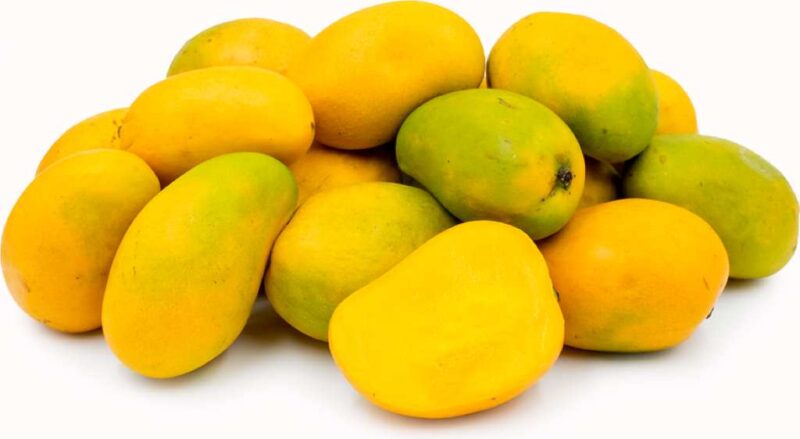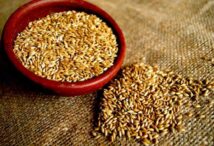Mango enthusiasts across the globe know there is more to this beloved fruit than meets the eye. With hundreds of mango varieties, there’s a whole world of flavors and textures to explore. Two varieties that often cause confusion are honey mangoes and Manila mangoes – are they the same, or is there a difference? Let’s dive in!
Honey Mangoes: The Sweetheart of the Mango World
Honey mangoes, also known as Ataulfo mangoes, are a Mexican cultivar known for their intensely sweet, creamy flavor. Here’s what sets them apart:
- Appearance: Honey mangoes are small, oval-shaped, and sport a vibrant golden-yellow skin when ripe. They often develop slight wrinkles, indicating their ideal ripeness.
- Flavor: The primary reason for honey mango’s popularity is the exceptionally sweet, almost honey-like flavor, balanced with subtle acidity.
- Texture These mangoes are famously fiberless, which results in an incredibly smooth and creamy texture.
- Origins: Honey mangoes were initially cultivated in Chiapas, Mexico.
Manila Mangoes: The Tropical Classic
Manila mangoes, also known as Philippine mangoes or Champagne mangoes, are a popular Southeast Asian cultivar noted for their nuanced sweetness. Here’s what makes them unique:
- Appearance: Manila mangoes are slender and slightly elongated with a flattened pit. They can vary in skin color from green to yellow, sometimes with a pink-orange blush.
- Flavor: Manila mangoes boast a sweet, tropical flavor, but they are less intensely sweet than honey mangoes. There’s a refreshing tanginess present in the flavor profile.
- Texture: While they contain some fibers, Manila mangoes have a fairly soft, juicy texture when ripe.
- Origins: As implied by their name, Manila mangoes originated in the Philippines.
Honey Mangoes vs. Manila Mangoes: A Side-by-Side Comparison
| Characteristic | Honey Mango (Ataulfo) | Manila Mango |
| Shape | Small and oval | Slender, elongated |
| Skin Color | Vibrant yellow | Green, yellow, or with a pink blush |
| Sweetness | Intensely sweet | Sweet with a slight tang |
| Texture | Fiber-free, very smooth | Slightly fibrous, but soft |
| Origins | Mexico | Philippines |
A Matter of Preference
While both honey and Manila mangoes are delicious, the “better” mango depends entirely on your preference. If you crave a burst of sweetness, honey mangoes are the clear winner. For those who enjoy a more balanced flavor profile with a touch of tanginess, Manila mangoes hit the spot.
Read Also: How Much Does a Pint of Blueberries Weigh?
Tips for Choosing and Enjoying
Regardless of the variety, here’s how to select and enjoy the best mangoes:
- Ripeness matters: Choose mangoes that yield slightly to gentle pressure but aren’t overly soft. A sweet, fruity aroma is also a good sign.
- Don’t focus on color: Color alone can be deceiving. Both honey and Manila mangoes can be ripe even when they have some green coloration.
- Versatile treats: Enjoy mangoes as a fresh snack, in smoothies, salads, desserts, or even savory recipes.
Beyond Honey and Manila
The world of mangoes is vast! Here are some other fascinating varieties to explore:
- Kent (Large, green with a red blush, sweet-rich flavor)
- Tommy Atkins (Popular commercial variety, oblong, mild flavor)
- Francis (Bright yellow with green tones, rich, spicy-sweet flavor)
In Conclusion
Whether you pick a honey mango or a Manila mango, you’re in for a tropical treat. Embrace the diversity of mango flavors and find your own favorite!
Remember, this article is designed for informational purposes. It’s always best to consult local markets or fruit specialists for the best and freshest mango varieties in your area.





